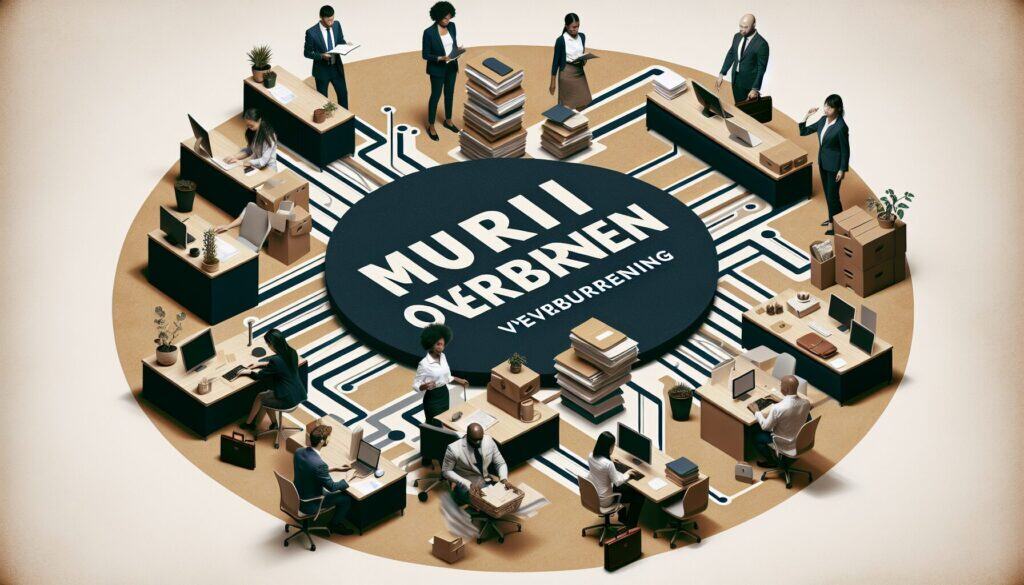Verhinderung der Überlastung von Mitarbeitern, Geräten und Systemen über die vorgesehenen Kapazitäten hinaus.
- Methodologien: Maschinenbau, Qualität
Muri (Abraum)

Muri (Abraum)
- Kontinuierliche Verbesserung, Ergonomie, Menschliche Faktoren, Schlanke Fertigung, Prozessverbesserung, Produktivität, Qualitätsmanagement, Sicherheit, Ausbildung
Zielsetzung:
Wie es verwendet wird:
- Ein Lean-Konzept, das darauf abzielt, dass die Arbeitsanforderungen angemessen sind und die Ressourcen nicht übermäßig beanspruchen. Dies beinhaltet eine angemessene Arbeitsgestaltung, Schulung, ergonomische Überlegungen und standardisierte Arbeit.
Vorteile
- Verbessert das Wohlbefinden und die Sicherheit der Mitarbeiter; verringert Ausfälle und Defekte, die durch übermäßige Belastung verursacht werden; erhöht die langfristige Produktivität und Nachhaltigkeit; führt zu besserer Qualität.
Nachteile
- Die Identifizierung von "Überlastung" kann subjektiv sein; die Verringerung von Muri kann manchmal den Anschein erwecken, dass der kurzfristige Output sinkt, wenn nicht auch die Prozesse verbessert werden, um die Last effizient zu bewältigen; erfordert einen sorgfältigen Ausgleich der Arbeitslast und die Gestaltung der Prozesse.
Kategorien:
- Ergonomie, Personalwesen, Lean Sigma, Herstellung, Qualität
Am besten geeignet für:
- Gewährleistung nachhaltiger und sicherer Arbeitsabläufe durch Gestaltung von Arbeitssystemen, die eine übermäßige Belastung von Menschen und Maschinen vermeiden.
Muri, or the concept of overburden, finds its application across various industries such as manufacturing, healthcare, and construction, where excessive workload can lead to operational inefficiencies. The methodology is particularly beneficial in the project phases involving work design and system implementation, facilitating a comprehensive evaluation of existing job structures and identifying areas prone to overburden. It is frequently initiated by team leaders and project managers but ideally involves cross-functional collaboration among engineers, safety officers, and Humanressourcen specialists to ensure a holistic approach. Ergonomic assessments play a pivotal role in this methodology, allowing for the redesign of workstations and processes to accommodate human capabilities and limitations, which is crucial in minimizing the physical strain on workers. Training programs focused on efficient work practices, safety protocols, and stress management can be developed as part of Muri implementation, further enhancing employee morale. In sectors such as healthcare, where worker fatigue can critically affect patient care, the adoption of Muri often leads to improved job satisfaction and reduced turnover rates. By mitigating strain on both personnel and machinery, organizations can expect a decrease in equipment malfunctions and product defects, thereby bolstering quality control efforts. This enhances sustainability as businesses operate more efficiently and reduce waste, contributing positively to their long-term goals. Ultimately, engaging in Muri not only promotes a safer work environment but also aligns with lean manufacturing principles that prioritize value creation while minimizing unnecessary resource consumption.
Die wichtigsten Schritte dieser Methodik
- Identify tasks that lead to overburdening and analyze their impact on resources.
- Redesign workflows to eliminate unnecessary steps and reduce workload.
- Implement ergonomic assessments to minimize physical strain on workers.
- Standardize work processes to ensure consistency and minimize variations.
- Provide targeted training to enhance skills and efficiency in task execution.
- Monitor the work environment regularly for signs of overburdening and make adjustments as needed.
- Encourage feedback from employees regarding workload and operational challenges.
Profi-Tipps
- Implement real-time monitoring systems to gauge workload and stress levels, adjusting tasks dynamically to prevent overburden.
- Develop cross-training programs that enhance skill Vielseitigkeit, enabling employees to shift tasks without excess strain or downtime.
- Incorporate feedback loops from workers to identify inefficiencies and improve task design, fostering a culture of continuous improvement.
Verschiedene Methoden lesen und vergleichen, Wir empfehlen die
> Umfassendes Methoden-Repository <
zusammen mit den über 400 anderen Methoden.
Ihre Kommentare zu dieser Methodik oder zusätzliche Informationen sind willkommen auf der Kommentarbereich unten ↓ , sowie alle ingenieursbezogenen Ideen oder Links.
Historischer Kontext
1950
1958
1960
1960
1960
1960
1963
1950
1950
1960
1960
1960
1960
1962
1970
(wenn das Datum nicht bekannt oder nicht relevant ist, z. B. "Strömungsmechanik", wird eine gerundete Schätzung des bemerkenswerten Erscheinens angegeben)















Verwandte Artikel
Management der Produktionsabläufe (MOM)
Fertigungsausführungssystem (MES)
Produktionslenkungsplan
Manuelle Prüfung
Bewertungsbögen für die manuelle Handhabung (MAC)
ManTRA (Instrument zur Risikobewertung manueller Tätigkeiten)